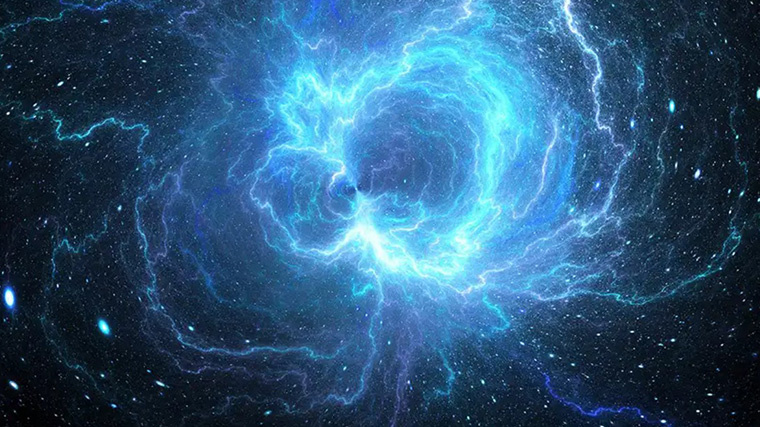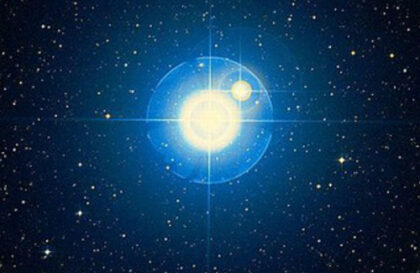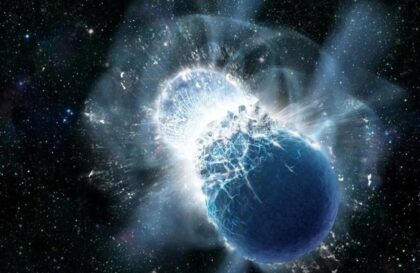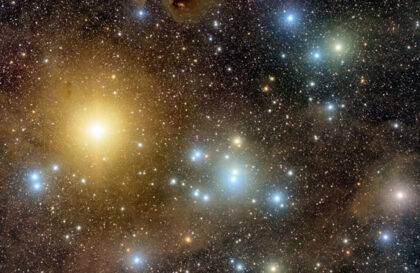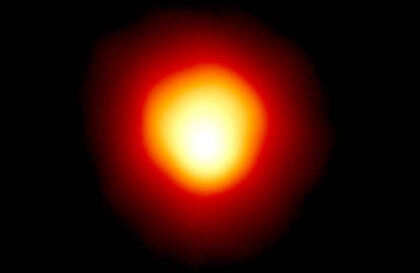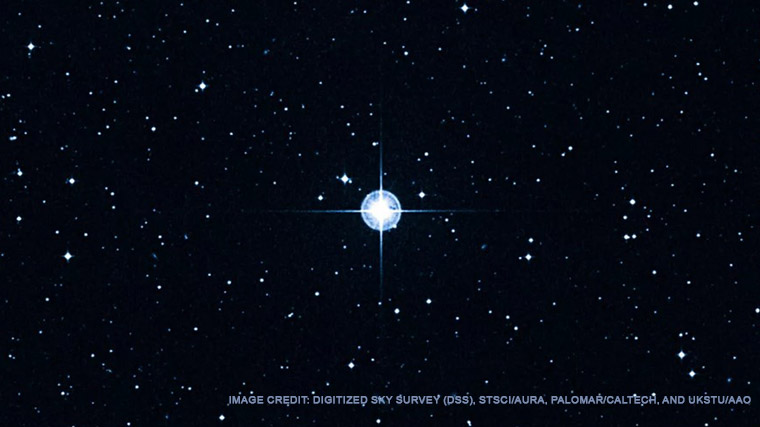Arcturus is a bright star in the constellation Volopas, the fourth brightest star in the night sky. The star has an apparent magnitude of –0.05 and is an orange giant star.
The diameter of Arcturus is about 25 times that of the Sun, and its mass is slightly greater than that of the Sun. The temperature on the surface of Arcturus is about 73% higher than the temperature of the Sun. Arcturus emits more than 113 times more light than the Sun.
It is at a distance of about 36.7 light-years from Earth.
The lifespan of Arcturus is approximately 6 to 8.5 billion years. This star has left the main sequence and is now on the red giant stage. In the future, Arcturus will burn helium in its core and enter the white dwarf stage. It is also receding from us and will not be visible to the naked eye in a million years.
Arcturus is part of the Arcturus Stream, a group of stars that move at a different angle and speed than most other stars. There are suggestions that some of these stars may be remnants of satellite galaxies that the Milky Way has absorbed.
Arcturus is also known for being associated with the arrival of spring in the northern hemisphere and the beginning of autumn in the southern hemisphere.
Arcturus is rushing relative to the Sun at a speed of about 257 miles per second (414 km/h).
The red giant Arcturus is roughly 25 times the diameter of our sun. It’s not the largest of the red giants, however, as this diagram shows. Credit: Wikimedia Commons.
Cultural significance of Arcturus
In Hawaii, the star Arcturus was called Hoku-lea, which means “star of joy” or “bright star.” In Polynesian cultures such as the Maori and Moriori, Arcturus was called Tautoru and associated with the name of the Marquesan hero and the constellation Orion. In the Marquesas, Arcturus was seen as the star that rules the month of January and symbolizes the ten heavens of the underworld of Tahiti. The ancient Greeks called Arcturus the “guardian of the bear” because he was close to Ursa Major and Ursa Minor. The Shawnee Native American culture associated Arcturus with a hunter they called “White Hawk.”
In the novel Voyage to Arcturus (1920) by David Lindsay, Arcturus becomes the center of the imaginary planet Tormans, where the novel’s main character embarks on a fantastic journey in search of his own truth and God.
In Frederick Brown’s What a Mad Universe (1949), Earthlings face off against invaders from Arcturus, and an epic battle unfolds for the future of our planet.
The television series Buck Rogers in the 25th Century (1979-1981) highlights the Arcturus system as the home of a civilization of telepaths, where the main character, Buck Rogers, faces incredible challenges and adventures.
In addition, it is essential to know that the name Hokule’a, the Hawaiian version of Arcturus, is carried by one of the asteroids of the main belt, emphasizing the cultural significance of this star for various civilizations.
Arcturus Scientific Research and Discovery:
Scientists studied the spectrum of Arcturus using different wavelengths, from infrared to ultraviolet, to learn more about the characteristics and properties of this star. Arcturus turned out to be an extraordinary red giant star with a large mass and a high speed of movement relative to the Sun. Studies of the radial velocity measurements of Arcturus have led to the suggestion of a satellite companion, but this fact has yet to be confirmed. Long-term fluctuations in the radial velocity of Arcturus were also detected, which may be related to the presence of a substellar companion.
How will Arcturus’ life end?
Credit: Ryan Whitwam
The life of the star Arcturus will end when it turns into a white dwarf surrounded by a planetary nebula. Arcturus is now a red giant expanding its outer layers and has already exhausted the hydrogen in its core. In the future, it will expand even more, become colder and less bright. Gradually, internal nuclear reactions will no longer maintain their pressure and temperature, and they will compress under the influence of gravity.
After this process, when Arcturus has finished burning its hydrogen envelope, it will eject its outer layers into space as a planetary nebula. Only the hot and ejected core will remain, and this core will become a white dwarf. White dwarfs are compressed remnants of giant stars without hydrogen for further nuclear reactions.
White dwarfs remain stable and emit heat but gradually cool and darken over time. A white dwarf can live for billions of years, and they no longer participate in light production. Thus, the life of Arcturus will end with the transformation into a white dwarf and the ejection of the planetary nebula.
Banner image: Optical image of Arcturus provided via the Mikulski Archive for Space Telescopes (MAST), STScI, and NASA
Image credit:
https://www.star-facts.com
https://earthsky.org
https://www.extremetech.com

